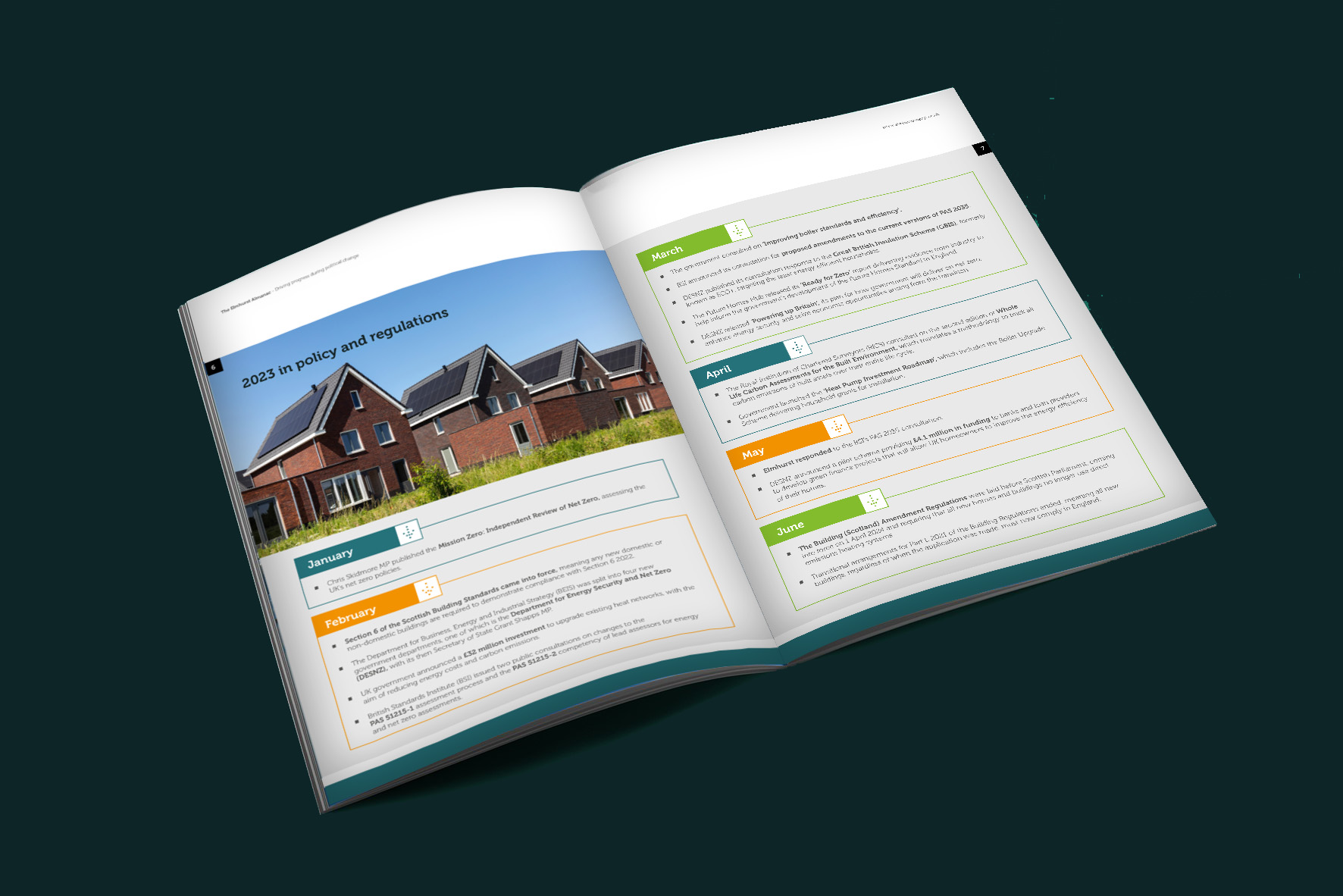Using current EPCs to drive net zero ‘is like using scissors to cut grass’
Energy performance certificates (EPCs) must change to help drive policies for cutting carbon emissions.
Proposals for a ‘New EPC’ come from Elmhurst’s latest publication, ‘The Elmhurst Almanac 2024 – Driving progress during political change,’ launched today (Tuesday 5 March) during Futurebuild, at London’s ExCel.
It also urges government not to let a 2024 general election become a scapegoat for stunted progress in EPC reform.

“Put simply, EPCs are currently being used to drive policies for cutting carbon emissions – and they are not up to the task. It is like using scissors to cut grass,” said Stuart Fairlie, managing director of Elmhurst Energy.
“The current EPC was designed as a cost metric to simply show how cheap or expensive a home is to heat. Instead, they should be one of the most powerful tools we have to improve the energy efficiency of our homes and buildings so that they are carbon net zero-ready and can support decarbonisation of the grid.”
“EPCs now need to give much more information on the energy cost, energy use and carbon emissions of a home or building. To make them easier to understand, the format should change to something similar to food labelling, and to increase their validity, they should be renewed every three years – or every time there is a change to a building that impacts its energy performance.”
At Elmhurst’s recent National Conference, in Leicester, on 27 February, Department for Levelling Up, Homes and Communities (DLUHC) head of the energy performance of buildings regulations Keeran Jugdoyal spoke about EPC reform progress earmarked for the coming months.
He said: “We know EPCs are buckling under the weight of what they are being used for. The system can’t stand up to this. But the value of EPCs is only increasing from a homeowner’s point of view – people are wanting to improve energy efficiency.”
The Almanac also delivers 10 vital policy and regulatory recommendations to government for putting energy efficiency policy relating to UK homes and buildings back on track. These include:
1. Use the ‘Golden Triangle’ of information in EPCs
EPCs should now show the ‘three Cs’: energy consumption, energy cost, and carbon emissions. They should also use a ‘Golden Triangle’ of information:
- Asset rating: the predicted energy cost and consumption of the building, based upon nominal or average occupancy patterns.
- Occupancy rating: the predicted energy consumption of the building, based on the people using it.
- Energy consumption: what energy the building uses to run, ideally based on data from smart meters.
2. Launch the ‘New EPC’ alongside the Home Energy Model and Future Homes Standard
Consultations are currently running on the new Future Homes and Buildings Standards, and the Home Energy Model (HEM) – the latter which will be used to demonstrate that a home complies with legal energy efficiency performance targets. The deadline has now been extended to Wednesday 27 March.
Elmhurst says the most sensible solution would be to deliver a new EPC in 2025 to coincide with the Home Energy Model and Future Homes Standard. This means the long-awaited EPC consultation, earmarked in the government’s 2020 EPC Action plan, should be launched in the coming months.
3. Rebalance tax applied to fuel
Currently, any low-carbon heating solution running on electricity, such as a heat pump, is more expensive than running a traditional gas boiler. This means they won’t be recommended on the current EPC.
To change this, we must switch the ‘green levy’ in energy bills so it applies to gas rather than electricity supply. Price ceilings and floors should be applied to ensure that what is right for the environment is also right for the consumer.
4. Put minimum energy efficiency targets back in place
The government must take a deep breath and reinstate energy efficiency targets for the private rented sector. All non-domestic tenancies should be required to meet EPC C by 1 April 2027. EPC B should apply to all privately rented non-domestic properties by 1 April 2030.
For private rented sector homes, the government should adjust the timeline previously proposed for all domestic private rented sector properties to reach EPC C for new and renewed tenancies by 2025, and all tenancies by 2028. Instead, new and renewed tenancies should reach EPC C by 2028, with a later date decided for all existing tenancies.
5. Launch a retrofit advice hub
A retrofit guidance hub located on GOV.UK would deliver much-needed consumer information on retrofit and energy efficiency improvements – including the best order to complete them and how they might work alongside planned property refurbishments.
It should support decisions around green finance and appropriate renewable technologies, such as heat pumps and solar panels, plus options for insulation, ventilation and heat recovery. The hub should also signpost to registered professionals so homeowners can locate properly accredited and trained people.
The Elmhurst Almanac 2024
Read online or download ‘The Elmhurst Almanac 2024: Driving progress during political change’ now.
READ ONLINE > DOWNLOAD >
